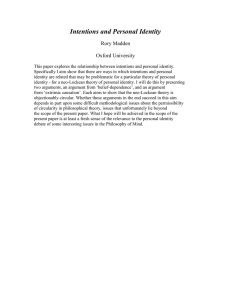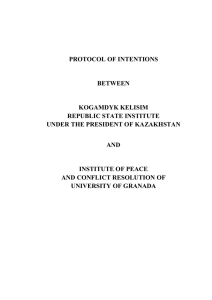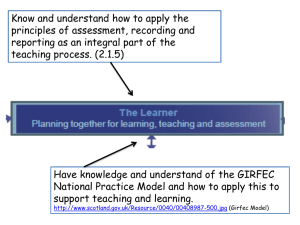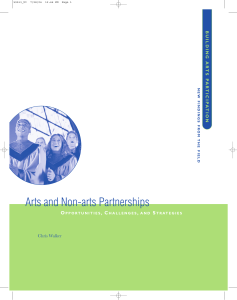LOCAL ARTS AND THE CREATIVE ECONOMY Clive Gray Reader in Cultural Policy
advertisement
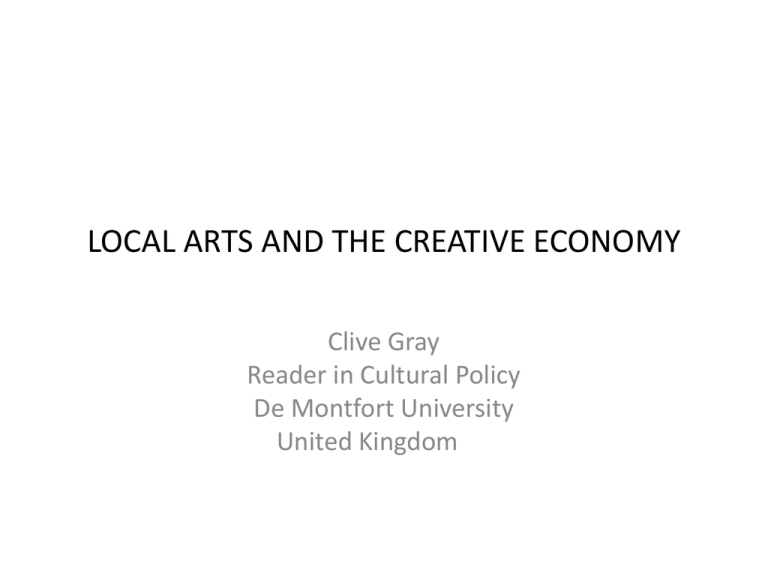
LOCAL ARTS AND THE CREATIVE ECONOMY Clive Gray Reader in Cultural Policy De Montfort University United Kingdom ARTS FOR ART’S SAKE, MONEY FOR GOD’S SAKE • Using culture and the arts for economic development • Top-down instrumentalisation: using the arts for other purposes • Bottom-up attachment: linking the arts to areas with greater political, economic and social clout WHAT ARE YOU TRYING TO DO? • Instrumental policy: must be assessed in terms of the (non-arts) policy intentions • Attachment policy: must be assessed in terms of both arts and non-arts policy intentions • ‘Pure’ arts policy: must be assessed only in terms of arts policy intentions POLICY OVERLAPS • Policy has multiple intentions and results • Cannot effectively assess these as if they were independent of each other • A requirement is for more effective policy assessment tools POLICY EVALUATION • • • • Problems of assessing arts policies Causality: how do the arts have an effect? Attribution: what effect do the arts have? Measurement: ‘not everything that counts can be counted; not everything that can be counted counts’ POLICY SUCCESS • Success in whose terms? • In instrumental terms: the policy does what government wants it to do • In attachment terms: the policy does what the providers want it to do • In absolute terms: if only I knew SO WHAT? • Arts practitioners need to be clear as to their policy aims • They need the appropriate mechanisms to show what they have done – • And with what success • And they should never forget that the whole process is deeply, deeply political

